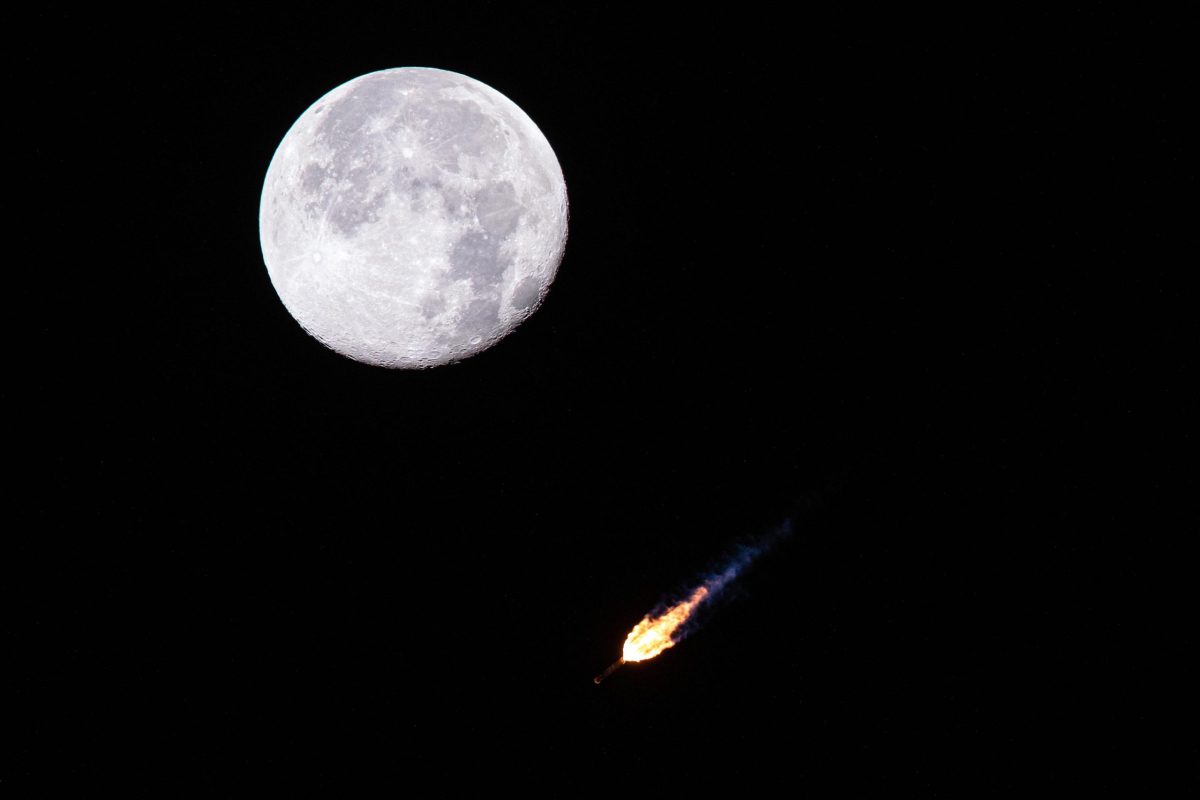The Moon makes a stunning backdrop for the successful launch of the third in a series of polar-orbiting weather satellites for the National Oceanic and Atmospheric Administration (NOAA) and our Low-Earth Orbit Flight Test of an Inflatable Decelerator (LOFTID) on November 10 at 4:49 a.m. EST from Vandenberg Space Force Base in California. A United Launch Alliance Atlas V rocket carried the Joint Polar Satellite System (JPSS)-2 and LOFTID. Credit: United Launch Alliance
Last week the NOAA’s Joint Polar Satellite System-2 (JPSS-2) satellite, with NASA’s LOFTID technology demonstration along for the ride, lifted off from Space Launch Complex-3 at Vandenberg Space Force Base in California. Powered by 860,000 pounds of thrust from the United Launch Alliance Atlas V 401 rocket’s RD-180 engine, the launch that occurred at 1:49 a.m. PST on November 10. It resulted in some stunning photographs captured by NASA, United Launch Alliance, and the United States Space Force, as can be seen below.
JPSS-2 will circle the globe 14 times a day 512 miles above Earth, providing forecasters the benefit of three polar-orbiting satellites operating simultaneously, joining its predecessors Suomi National Polar-orbiting Partnership (Suomi NPP) and NOAA-20.
Following JPSS-2’s deployment, the LOFTID heat shield autonomously inflated and re-entered Earth’s atmosphere, splashing down about 500 miles off the coast of Hawaii just over two hours and ten minutes after launch.

The National Oceanic and Atmospheric Administration’s (NOAA) Joint Polar Satellite System-2 (JPSS-2) satellite with NASA’s Low-Earth Orbit Flight Test of an Inflatable Decelerator (LOFTID) as a secondary payload, stand ready to lift off atop a United Launch Alliance (ULA) Atlas V rocket from Space Launch Complex-3 at Vandenberg Space Force Base in California on November 10. Credit: NASA/Liz Wilk

The Mobile Service Tower rolls back from the United Launch Alliance (ULA) Atlas V rocket carrying the Joint Polar Satellite System (JPSS)-2 civilian polar-orbiting weather satellite for the National Oceanic and Atmospheric Administration (NOAA) and NASA’s Low-Earth Orbit Flight Test of an Inflatable Decelerator (LOFTID) from Space Launch Complex-3 at Vandenberg Space Force Base, California. Credit: United Launch Alliance

A United Launch Alliance (ULA) Atlas V rocket carrying the Joint Polar Satellite System (JPSS)-2 civilian polar-orbiting weather satellite for the National Oceanic and Atmospheric Administration (NOAA) and NASA’s Low-Earth Orbit Flight Test of an Inflatable Decelerator (LOFTID) lifts off from Space Launch Complex-3 on November 10 at 1:49 a.m. PST. Credit: United Launch Alliance
JPSS-2/LOFTID isolated views featuring launch, JPSS-2 spacecraft separation, LOFTID inflation, LOFTID spin up and spacecraft separation, and LOFTID splashdown. Credit: NASA
Share your story or advertise with us: Whatsapp: +2347068606071 Email: info@newspotng.com

























